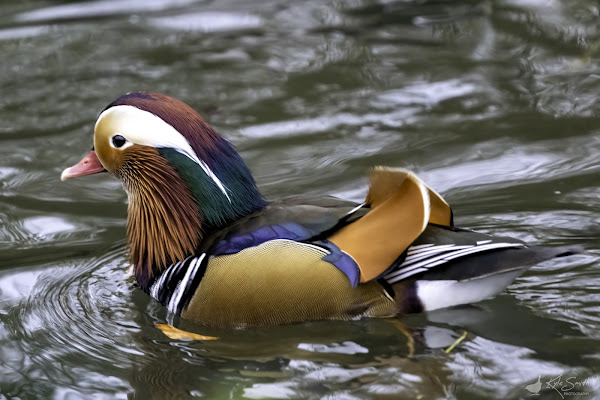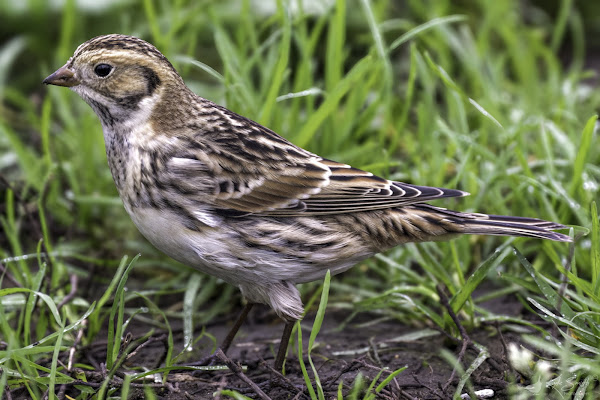Velvet scoters are large sea ducks typically found in marine environments but on November 8, two first-winter birds were reported at Grimsbury Reservoir in Oxfordshire - a notable inland sighting, as these birds are usually associated with coastal waters where they dive for molluscs and other invertebrates. Their specialised diet of marine life, such as mussels, makes their presence in inland waters even more remarkable.
This species usually form large, tight flocks at sea and are rarely seen inland; records are typically during the winter months, when the birds may venture away from their usual coastal habitat. It is not typical for them to stray far from the sea, though some birds, particularly young ones, have been known to explore freshwater environments before settling back in coastal zones.
Velvet Scoters have a bulky shape and large bill, with males displaying a distinctive white 'tear drop' mark behind the eye and a white patch on the wing, while females are generally dark brown with paler facial patches.
I had seen hundreds of them at Musselburgh over the summer while searching for the Stejneger's Scoter (report here), but the chance to see them up close was too good to pass up. I only had a half-hour break from work, but luckily, the spot was less than ten minutes away.
I parked and headed around the west side, assuming the view would be better from there - a strategy that works about 75% of the time. Sure enough, they were there, gathered in the northwest corner but gradually drifting toward the middle. The overcast sky wasn’t ideal for photos, and the light wasn’t on my side, but I couldn’t complain - I was fortunate they had stuck around.
I snapped a few quick shots before turning back to return to the office, passing Paul Wyeth on the way for a quick chat. The birds were starting to settle down to sleep, and I didn’t have time to wait for them to return to the water's edge.
A Lapland bunting had been found at Staines Reservoir in Surrey on November 5, 2024; this sighting was reported by David Hutchinson and featured on BirdGuides. Staines Reservoirs, located near Heathrow Airport, are known for regularly attracting various bird species, making it a popular spot - it wouldn't be the first time we'd been there this year.
Lapland Buntings are slightly larger than reed buntings, characterised by a well-marked head pattern, chestnut nape, and chestnut wing panel. They spend most of their time on the ground and it has been reported that the bird has been showing extremely well, allowing observers to approach within 5 meters. It has also been hopping even closer to under a metre.
The ring-necked parakeet, also known as the rose-ringed parakeet, is a medium-sized, bright green parrot with a distinctive red bill and a long, narrow tail. Males feature a black and pink neck ring, while females and juveniles lack this marking. Originally native to Africa and southern Asia, ring-necked parakeets have established a significant population in London. Their adaptability to urban environments and the availability of food sources have contributed to their proliferation. The British Trust for Ornithology (BTO) estimated approximately 12,000 breeding pairs in the UK where the population has experienced significant growth, with a 2,154% increase between 1995 and 2022 - and with numbers continuing to grow.
In Staines, located to the west of London, they are also observed in areas such as Staines Moor, where they are listed among the resident bird species. Their presence here reflects the species' expansion beyond central London into surrounding regions and while their vibrant appearance adds an exotic element to urban wildlife, ring-necked parakeets have raised ecological concerns. They compete with native bird species for nesting sites and food resources, potentially impacting local biodiversity.
We continued onto the causeway and saw two groups ahead, two lines about 20m apart. The Lapland bunting was between the two and feeding back and forth - this little stunner was putting on a great show, coming too close for photos at times.
We watched as it pushed up against our line and then the other further west along the causeway.
After enjoying fantastic views of the Lapland Bunting, we decided to head over to Staines Moor for the rest of the day. Wanting to give others a chance to see the bird and reduce any pressure on it, we passed on our positions and began our walk. As we left, we both checked BirdGuides for any nearby sightings. To our surprise, a report of a pied wheatear at Seaford popped up! Although it wasn’t exactly close - around 75 miles away on the coast near Beachy Head - the prospect of a lifer was too tempting. With plenty of daylight left, we exchanged a glance, shrugged, and hit the road.
Usually found in southeastern Europe and western Asia the pied wheatear is considered a rare vagrant in the UK, with most sightings occurring during late autumn, particularly in October and November. Records are sporadic, with occurrences noted in various coastal regions - typically they inhabit open, rocky terrains and are known for their distinctive tail movements. They fit right in on the Sussex cliffs.
We pulled into the car park along the esplanade and saw reports that the bitd had been lost about 45 minutes before, over the edge of the cliff. We stopped for a coffee and then joined a group heading for the base of the cliffs - a female black redstart perched on the railings to the jetty, then flew across to the white cliff, stopping to watch us approach.
Two birders dropped down onto the beach to work along and see if they could spot the bird there but came back empty handed.
We watched as two black redstarts darted across the square boulders and up the cliff face, while meadow pipits flitted about on the cliff tops. A robin frequently caught our attention as it foraged, momentarily raising hopes it might be the bird we were searching for. Climbing to the top of the first cliff face, we spotted the female black redstart, offering phenomenal insane views to a couple of photographers.
We worked further up the slope stopping regularly and scanning the cliff edge and back onto the golf course behind. The views were getting better and better. A pair of stonechats showed on the edge of the golf course, dropping onto the ground regularly. A few rock pipits could be found closest to the cliff edge.
We worked along the clifftops and stopped regularly to ensure we wouldn't miss the bird if still there. I got a WhatsApp update from our friend Adrian Sparrowhawk to say he'd arrived and that he and Bryan Manston were having lunch. After a mile we stopped and scanned ahead but we couldn't find our bird and neither could anyone else.
The pied wheatear is characterised by its distinctive black and white plumage, with males displaying a black face and throat contrasted by a white crown and rump. Our bird was said to be a female and generally browner but still exhibiting the species' characteristic tail pattern. A few birders had ventured along further but came back empty handed so we decided our luck wasn't in today. We had a hard-stop to be back in Banbury and so worked our way back to the car and stopped for a late lunch. Despite the weather and temperature, some were venturing into the water - absolute madness.
On the way home the bird was refound, presumably pushed back up onto the cliffs by the high tide (scheduled for 4pm). Damn. Kev would go back and ticked it on the Wednesday while I was in Sheffield working.
Year list: 244.








































































